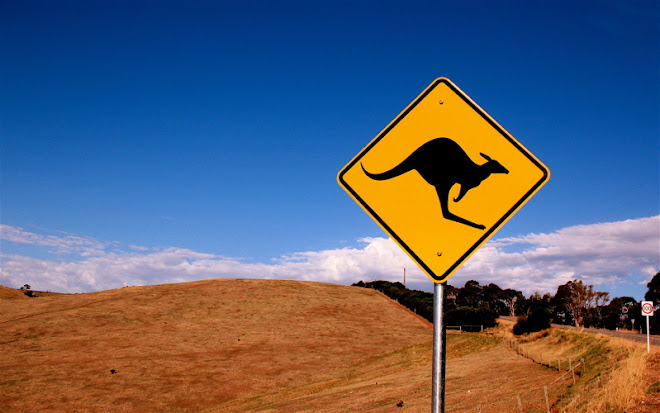
Well we finally got back this weekend after two exciting weeks of traveling around Tasmania. Tasmainia is the southernmost island of Australia located 240km south of Victoria across the Bass Strait. The island is fairly small compared to the rest of Australia (its the smallest state) and is 300km long by 315km wide. The highest mountain on the island is Mt. Ossa at 1617km (5300 feet). Nineteen National Parks covering one quarter of the island help to preserve the abundance of beautiful coastlines, beaches, rivers, forests, wildlife, glacier carved lakes, and stunning mountain ranges.
The island has a bleak history, Europeans discovered Tasmania in 1642. By the mid 1700s they were starting to settle on the island and wiped out most of the indigenous Aborignies within the next 150 years. Hobart was built around 1790 along with prison colonies around the area south of Hobart, Port Arthur. Convicts were shipped from mainland Australia and England. Over 74,000 convicts were sent to Tasmania between 1800 to 1850s. In 1853 government stopped the penal conlonies and convicts from being shipped and sent here. The island was originally named Van Diemens land, but was later changed in 1858 to Tasmania to free itself from the image of its tainted penal history.
Today Tasmania is a vibrant relaxed place. Although you can still visit the remains of the prison colonies, most notbaly Port Arthur and learn about its past. The biggest cities are Hobart, Launceston, and Devonport. The are very small cottage seaside towns and villages scattered throughout the island. For the most part, life is relativley laid back, rural, and unhurried here. There are about 500,000 people on the island. The people we encountered were very friendly and interesting to talk to. The main industries are mining, logging, tourism, and agriculture. The local cheese and fresh seafood were fantastic. Below are a few photos from our trip.

The sunsets over the ocean were breathtaking. Our favorite beach was Wineglass Bay in the Freycinent Pinensula.

We hiked around Dove Lake in the Cradle Mountain. The weather was raining and cold, and the rain later changed to snow.

The tall gum trees were massive. Here you can see Kim in the bottom right to give you a sense of scale. This picture only shows about the bottom half of the tree. We saw trees even thicker and taller than these, and some were close to 98m (300 feet high) and very old. I can't imagine the sound one of these trees must make when it eventually crashes to the ground.

We had a great place to stay in Hobart, thanks to Kim's friends Ron and Avril. The have a nice house in the hills overlooking the city and this is the veiw we got to see from their deck.


Kim and I went to a great photo gallery exhibit in Cradle Mountain. We found out that they had a photo contest from pictures taken in the world heritage areas around Tasmania, so we decided to send in two of our photos. The first one Kim took of Lake St. Clair, and Patrick took the other one of the the green moss along a hike named the "Enchanted Forest". Let's keep our fingers crossed, top prize is $5,000. But hey even if we get our photos displayed that would be great!

Here is the infamous Tasmanian Devil. We stopped at a nature park outside of Bicherno were we could see them up close and watch them feed. They are small, cute, animals, but have razor sharp claws and teeth, and can be hightly aggresive when feeding. They are under threat to a new disease that spreads tumors in their mouths and faces, and has devestated much of the population. The Tasmanian tiger went extinct in around 1940, lets hope that dosen't happen to the Tassy Devil.

We went up to the top of Mt. Wellington outside of Hobart, and saw our first taste of snow in Australia. Some kids earlier in the day decided to build a snowman on the summit.

Rocks and washed up driftwood along the coast.

This is the old historic church building in the convict town of Port Arthur. There is a great museum explaining the local history of the penal colony and you could walk around the grounds and visit 30 different buildings, jails, shops, houses, and prison quarters to see what life must have been like here 200 years ago.
Tasmania was great and we really enjoyed our time traveling there. It was such a contrast to the other parts of the country that we have seen so far. The area was rich in history and very scenic with incredible natural parks and beaches. There were also many interesting people, places, and things to see.
